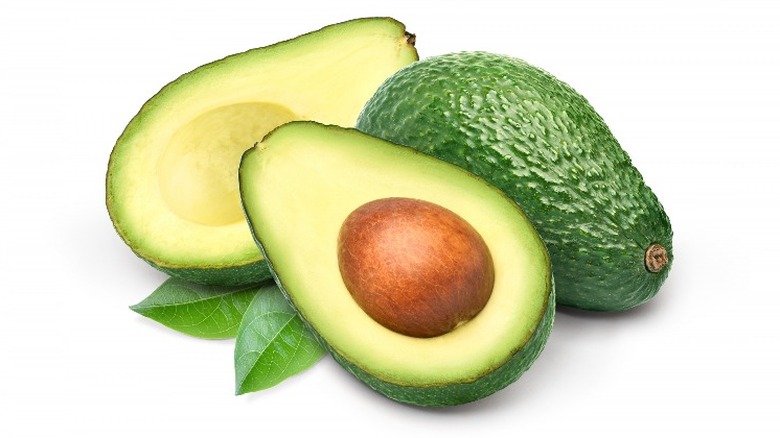You're Not Getting Enough Vitamin F If This Happens To You
You've likely heard of vitamins A, B, C, D, and E. But you may not be as familiar with vitamin F.
This is because vitamin F is not technically a vitamin in the traditional sense. According to the experts at Healthline, vitamin F was discovered in the 1920s when scientists noticed that fat-free diets had an adverse impact on rats. As a result, the scientists dubbed the two fats the rats were missing — alpha-linolenic acid (ALA) and linoleic acid (LA) — as vitamin F.
ALA and LA are two key fats that support the body's systems in a number of ways, including providing your cells with structure and flexibility, supporting vision and brain development, serving as a source of calories, and converting into other fats to support your health, among other roles.
ALA is an omega-3 fat and LA is an omega-6 fat and they are believed to provide other health benefits. As an omega-3 fat, ALA may reduce inflammation and the risk of heart disease. ALA may also improve certain mental health issues, though more research is needed. LA may also reduce the risk of heart disease, as well as diabetes. Some research also suggests that LA may help to maintain blood sugar levels.
What are the symptoms of low vitamin F?
Vitamin F deficiency is rare, but not unheard of. According to Dr. Eric Berg, DC, a chiropractor and health educator, vitamin F is an essential fatty acid, meaning you must get it from your diet because your body does not naturally produce it. Berg goes on to explain that the optimal ratio of ALA to LA that we should consume is two to one. However, due to how the Western diet has evolved, we tend to consume ALA to LA in ratios as high as twenty to one, which can lead to vitamin F deficiency. One symptom of this is dry, flaky skin. Berg also warns that this ratio imbalance could lead to more serious issues, such as an inflamed prostate, vision and heart problems, and memory issues.
The way to combat vitamin F deficiency is to eat more omega-3 foods to improve your ALA to LA ratio. Berg suggests foods such as avocados, leafy greens, nuts such as walnuts and almonds, and seeds such as sunflower seeds and chia seeds. Experts at the Mayo Clinic suggest sardines, cod, salmon and light, canned tuna as good sources for omega-3s. You will also improve the balance by staying away from fried foods and other junk foods.
To maintain proper ratios of ALA and LA fats, begin looking at the foods you consume through the lens of the kinds of essential fatty acids they contain, to help keep your body in optimum health.

